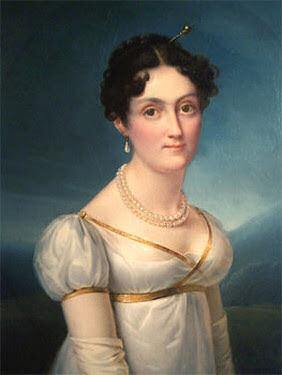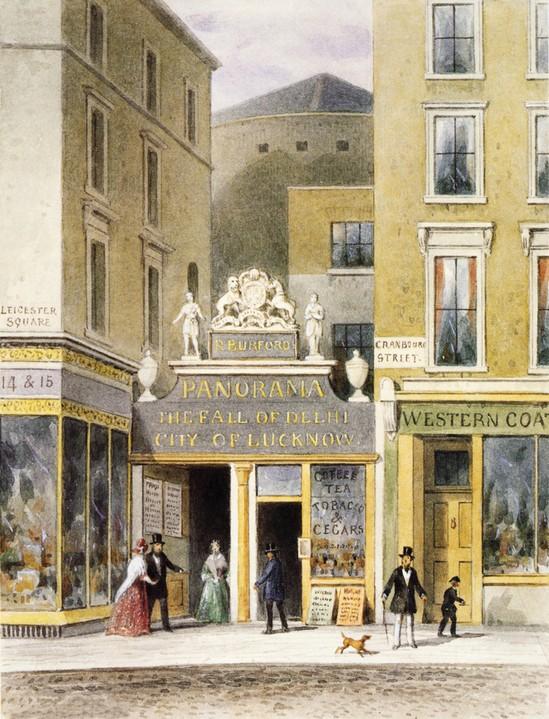Isaac Watts: Author of Joy to the World
Joy to the world! the Lord is come; Let earth receive her King; Let every heart prepare him room, And heaven and nature sing, And heaven and nature sing, And heaven, and heaven, and nature sing.The words are by English hymn writer Isaac Watts, based on Psalm 98 in the Bible. The song was first published in 1719 in Watts' collection; The Psalms of David: Imitated in the language of the New Testament, and applied to the Christian state and worship. Watts wrote the words of "Joy to the World" as a hymn glorifying Christ's triumphant return at the end of the age, rather than a song celebrating His first coming. Only the second half of Watts' lyrics are still used today.
The music was adapted and arranged to Watts' lyrics by Lowell Mason in 1839 from an older melody which was then believed to have originated from Handel, not least because the theme of the refrain (And heaven and nature sing...) appears in the orchestra opening and accompaniment of the recitative Comfort ye from Handel's Messiah, and the first four notes match the beginning of the choruses Lift up your heads and Glory to God from the same oratorio. However, Handel did not compose the entire tune.The name "Antioch" is generally used for the tune.
 Isaac Watts (17 July 1674 – 25 November 1748) was an English hymnwriter, theologian and logician. A prolific and popular hymnwriter, he was recognised as the "Father of English Hymnody", credited with some 750 hymns. Many of his hymns remain in use today, and have been translated into many languages.
Born in Southampton, England, in 1674, Watts was brought up in the home of a committed religious Nonconformist — his father, also Isaac Watts, had been incarcerated twice for his controversial views. At King Edward VI School (where one of the houses is now named "Watts" in his honour), Watts learned Latin, Greek and Hebrew.
From an early age, Watts displayed a propensity for rhyme. Once, he had to explain how he came to have his eyes open during prayers:
Isaac Watts (17 July 1674 – 25 November 1748) was an English hymnwriter, theologian and logician. A prolific and popular hymnwriter, he was recognised as the "Father of English Hymnody", credited with some 750 hymns. Many of his hymns remain in use today, and have been translated into many languages.
Born in Southampton, England, in 1674, Watts was brought up in the home of a committed religious Nonconformist — his father, also Isaac Watts, had been incarcerated twice for his controversial views. At King Edward VI School (where one of the houses is now named "Watts" in his honour), Watts learned Latin, Greek and Hebrew.
From an early age, Watts displayed a propensity for rhyme. Once, he had to explain how he came to have his eyes open during prayers:
- A little mouse for want of stairs
- ran up a rope to say its prayers.
- O father, father, pity take
- And I will no more verses make.
- "While he granted that David [to whom authorship of many of the Psalms is traditionally ascribed] was unquestionably a chosen instrument of God, Watts claimed that his religious understanding could not have fully apprehended the truths later revealed through Jesus Christ. The Psalms should therefore be "renovated" as if David had been a Christian, or as Watts put it in the title of his 1719 metrical psalter, they should be "imitated in the language of the New Testament."
From all that dwell below the skies Let the Creator's praise arise; Let the Redeemer's name be sung Through every land, by every tongue.
Significant cultural or contemporary impacts
- One of his best known poems was an exhortation "Against Idleness and Mischief" in Divine Songs for Children, a poem which was famously parodied by Lewis Carroll in his book Alice's Adventures in Wonderland, in the poem "How Doth the Little Crocodile", which is now better known than the original. In the 1850 novel David Copperfield by Charles Dickens, school master Dr. Strong quotes from Watts' "Against Idleness and Mischief": "Satan finds some mischief still, for idle hands to do."
- In the 1884 comic opera called Princess Ida, there is a punning reference to Watts in Act I. At Princess Ida's women's university no males of any kind are allowed, and the Princess's father, King Gama, relates that "She'll scarcely suffer Dr. Watts' 'hymns'".
- Isaac Watts is commemorated in the Church of England, the Calendar of Saints of the Lutheran Church - Missouri Synod and Evangelical Lutheran Church in America on 25 November and in the Episcopal Church (USA) on 26 November.
Other works
Besides being a famous hymn-writer, Isaac Watts was also a renowned theologian and logician, writing many books and essays on these subjects. Watts was the author of a text book on logic which was particularly popular; its full title was, Logic, or The Right Use of Reason in the Enquiry After Truth With a Variety of Rules to Guard Against Error in the Affairs of Religion and Human Life, as well as in the Sciences. This was first published in 1724, and its popularity ensured that it went through twenty editions. Watts' logic text book was written for beginners of logic, and the book is arranged methodically. He divided the content of his elementary treatment of logic into four parts: perception, judgement, reasoning, and method, which he treated in this order. Each of these parts is divided into chapters, and some of these chapters are divided into sections. The content of the chapters and sections is then subdivided by using some combination of the following devices: divisions, distributions, notes, observations, directions, rules, illustrations, and remarks. Thus, every contentum of the book comes under one or more of these headings, and this methodical arrangement serves to make the exposition clear. In Watts' Logic there are some notable departures from what one would expect to find in a text book of logic from Watts' time, and there are also some notable innovations. Detectable throughout the work is the influence of British empiricism, and in particular, the influence of philosopher and empiricist John Locke. For, Locke was a contemporary of Watts, and in the Logic there are several references to Locke and his Essay Concerning Human Understanding, in which Locke espoused his empiricist views. Another departure from most other authors of logic is that Watts was careful to distinguish between judgements and propositions. According to Watts, judgement is "to compare... ideas together, and to join them by affirmation, or disjoin then by negation, according as we find them to agree or disagree". However, he continues by saying, "when mere ideas are joined in the mind without words, it is rather called a judgement; but when clothed with words it is called a proposition". Watts' Logic follows the scholastic tradition and divides propositions into universal affirmative, universal negative, particular affirmative, and particular negative. In the third part, Watts discusses reasoning and argumentation, with particular emphasis on the theory of syllogism, which was a centrally important part of the classical logic which Watts' was treating in his work. According to Watts, and in keeping with the common practice of logicians of his day, Watts defined logic as an art (see liberal arts), as opposed to a science. Throughout the Logic Watts revealed his high conception of logic by stressing the practical side of logic, rather than just the speculative side. According to Watts, as a practical art, logic can be really useful in any of our inquiries, whether they are inquiries in the arts, or inquiries in the sciences, or inquiries of an ethical kind. It is Watts' emphasis on logic as a practical art which distinguishes his book from others. For, by stressing that there is a practical and non-formal part of logic, Watts was able to give rules and directions for any kind of inquiry, including the inquiries of science and the inquiries of philosophy. These rules of inquiry were given in addition to the formal content of classical logic that one would expect to find in a text book on logic from that time. Thus, Watts' conception of logic as being divided into its practical part and its speculative part, and therefore containing more than just formal logic, marks a departure from the conception of logic of most other authors. Instead, Watts' conception of logic is much more akin to that of the later, nineteenth century logician, C.S. Peirce. Isaac Watts' Logic became the standard text on logic at Oxford, Cambridge, Harvard and Yale; being used at Oxford University for well over 100 years. C.S. Peirce, the great nineteenth century logician, wrote favourably of Watts' Logic. When preparing his own text book on Logic entitled A Critick of Arguments: How to Reason (also known as the Grand Logic), Peirce wrote, 'I shall suppose the reader to be acquainted with what is contained in Dr Watts' Logick, a book... far superior to the treatises now used in colleges, being the production of a man distinguished for good sense.' The Logic was followed in 1741 by a supplement, The Improvement of the Mind, which itself went through numerous editions and later inspired Michael Faraday.Memorials
The earliest surviving built memorial to Isaac Watts is at Westminster Abbey; this was completed shortly after his death. His much-visited chest tomb, in its photogenic setting at Bunhill Fields, dates from 1808, replacing the original that had been paid for and erected by Lady Mary Abney and the Hartopp family. In addition a stone bust of Watts can be seen in the non-conformist library Dr Williams's Library in central London. The earliest public statue stands at Abney Park, where he lived and died before it became a cemetery and arboretum; a later, rather similar statue, was funded by public subscription for a new Victorian public park in the city of his birth, Southampton. In the mid nineteenth century a Congregational Hall, the Dr Watts Memorial Hall, was also built in Southampton, though after World War II it was lost to redevelopment. Now standing on this site is the Isaac Watts Memorial United Reformed Church. One of the earliest built memorials may also now be lost: a bust to Watts that was commissioned on his death for the London chapel with which he was associated. The chapel was demolished in the late eighteenth century; remaining parts of the memorial were rescued at the last minute by a wealthy landowner for installation in his chapel near Liverpool. It is unclear whether it still survives. The stone statue in front of the Abney Park Chapel at Dr Watts' Walk, Abney Park Cemetery, was erected in 1845 by public subscription. It was designed by the leading British sculptor, Edward Hodges Baily RA FRS. A scheme for a commemorative statue on this spot had first been promoted in the late 1830s by George Collison, who in 1840 published an engraving as the frontispiece of his book about cemetery design in Europe and America; and at Abney Park Cemetery in particular. This first cenotaph proposal was never commissioned, and Baily's later design was adopted in 1845.Excerpted from wikipedia.com.



1 comment
That’s so interesting
g
Leave a comment
This site is protected by hCaptcha and the hCaptcha Privacy Policy and Terms of Service apply.